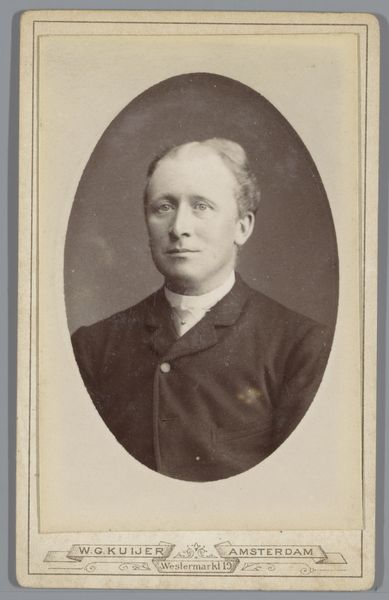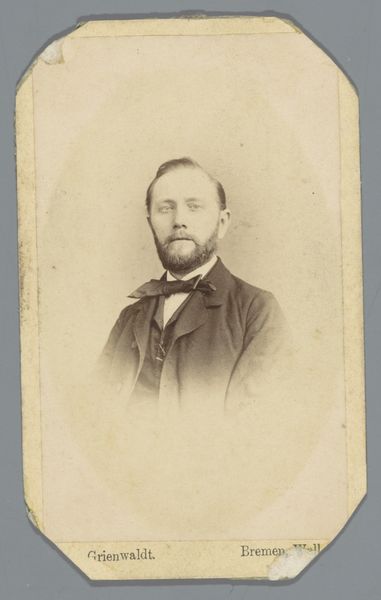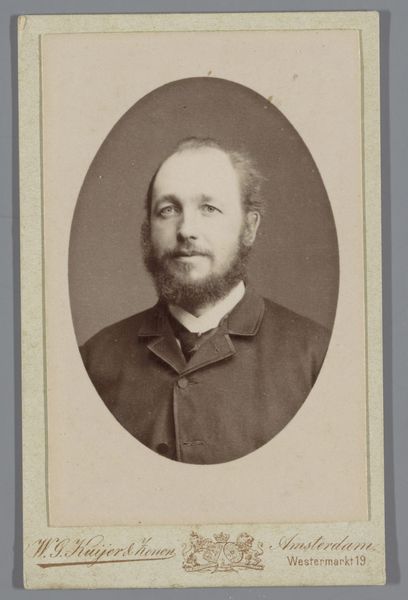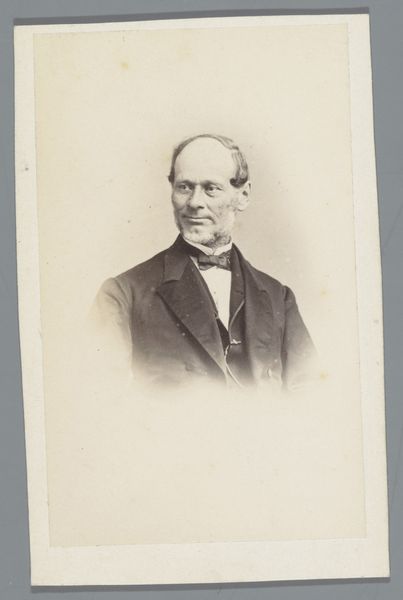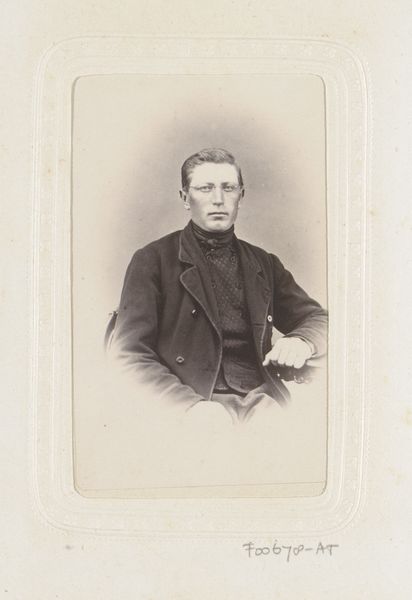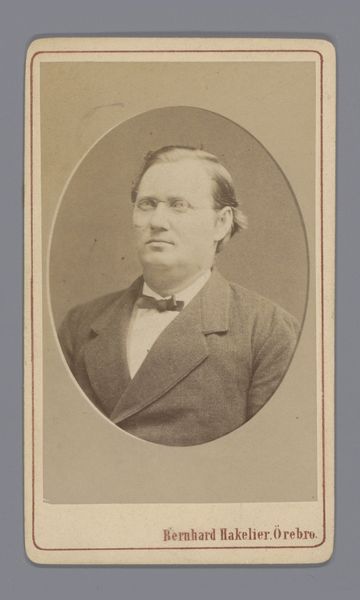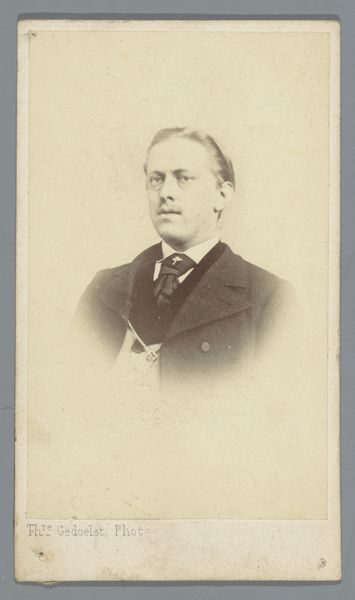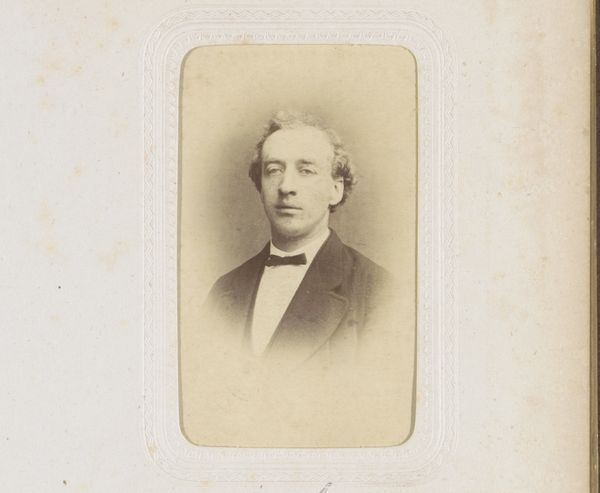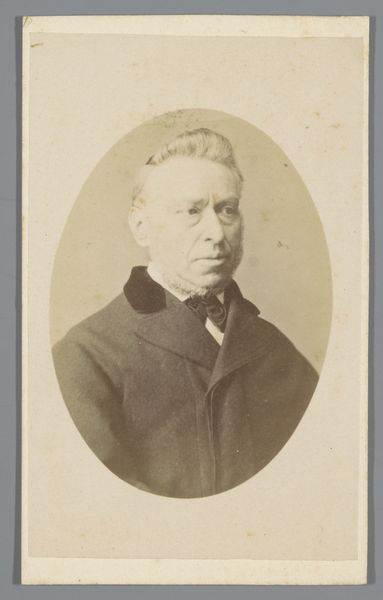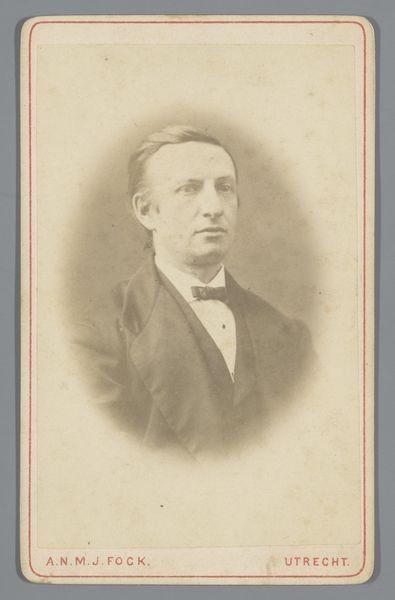
photography, gelatin-silver-print
#
portrait
#
photography
#
gelatin-silver-print
#
19th century
#
realism
Dimensions: height 100 mm, width 61 mm
Copyright: Rijks Museum: Open Domain
This is a photograph of an unknown man with glasses, made by J.W. Schellen. It's printed on a card that's only 100 millimeters high and 61 millimeters wide. In the 19th century, photography was often understood as a collision between the latest science and older traditions of portraiture. But the process of photographic printing also had much in common with other forms of reproduction, like printmaking. Here, the tones are rich browns and creams, achieved through a complex chemical process. The final print is mounted on card stock. Notice how the edges are slightly beveled, a refinement that speaks to the commercial imperative behind this image. While we don't know who this man is, it's almost certain that he paid for this portrait to be made. Photography like this was increasingly accessible, but still a considered purchase. The card format also allowed these images to circulate. They could be shared among friends and family, and even collected in albums like keepsakes. So in thinking about the value of this photograph, we should consider the amount of work involved in its production, and also its social function.
Comments
No comments
Be the first to comment and join the conversation on the ultimate creative platform.
